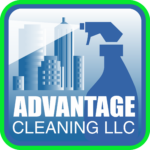Stripping and waxing floors is not just about cleaning the floor but about creating a safe and attractively appearing appearance that reflects the quality of your business’s services and commitment to quality.
How to strip and wax commercial floors? – In this guide we share our excellence in professional stripping and floor waxing, to help you avoid damaging your floors and ensure the stripping and waxing process provides you with the fresh new appearance, protected surface for easy maintenance, that you intended for your floor.

What does stripping The floor mean?
Stripping the floor is the process of removing the old floor wax, floor finish, and accumulated dirt and grime from the floor surface. This is typically done using a floor stripping solution and specialized equipment that breaks down and remove these layers, so they can be cleaned away.
How Do You strip and wax a floor
Before you dive into the stripping and waxing procedure, it is crucial that you first determine the floor type as the type of floor determines the right floor stripping solution and process to use in order to avoid floor damage.
While stripping and waxing floors it is required by OSHA safety standards that you use proper personal protective equipment, non slip shoes, and safety gear.
Each of these steps is vital in maintaining the appearance and extending the lifespan of your commercial floor, ensuring a clean, safe, and appealing floor in any commercial facility.
What is the best way to strip floors?
1. Determine the type of floor and the right waxing solution
Waxing can be applied to several types of flooring to enhance their appearance, durability, and extended lifespan.
Here are some of the most common types of floors that can be waxed: vinyl composition tile (VCT), linoleum, concrete and terrazzo, rubber, and cork floors.
2. Strip existing wax from the floors
The floor stripping involves removing the old wax, dirt, and dirt accumulated on the floor surface. A floor stripping solution is applied to the floor, which breaks down the layers of old wax.
A specialized floor stripper machine with abrasive pads are then used to agitate the surface, effectively removing the old wax.
After stripping, the floor should be thoroughly rinsed with water to remove any residue of the stripping solution and old wax, so that it is ready for sealing.
It’s important to ensure that all wax and stripping solution are completely removed to avoid trapping dirt under the new layer of wax and finish.
3. Apply floor sealer
Once the floor is clean and dry, a floor sealer is applied. The sealer acts as a base coat by giving a strong foundation for the floor finish. It helps increase the adhesion of the finish and increases its durability.
Sealers are extra important for surfaces like VCT, as they prevent the finish from soaking into the floor, which can lead to spots appearing on the floor.
The application is typically done using a mop or a specialized machine to ensure an even layer which is very important on large surfaces. The sealer must be allowed enough dwell time to dry completely. For dwell time please consult the manufacturer’s instructions before applying the finish.
4. Apply floor finish
After the sealer has dried, multiple coats of floor finish are applied. When you wax floors, each coat needs to dry thoroughly before the next layer is added. This step enhances the floor’s shine and provides a protective coating that resists scuffs, stains, and scratches.
The amout of coats a floor needs depends on the type of floor and the level of gloss desired. The finish makes the floor look new but also provides a wear layer that can be maintained with regular cleaning and buffing.
The application of floor finish is done in the same way as applying the sealer, using a clean mop or machine for a an even even application.
5. Floor buffing
Floor buffing is the final step in the process of stripping and waxing floors. This can be done using a high-speed buffer which polishes the floor surface, enhancing the shine and ensuring the finish is evenly applied.
Buffing helps to smooth out any imperfections and brings out a high-gloss shine in the finish. Regular buffing as part of ongoing floor maintenance helps to extend the life of the floor finish, keeping it looking fresh and new for longer.
It also helps to remove light scuffs and marks, maintaining the appearance of the floor between deep cleaning sessions.

How to maintain your waxed floors
Maintaining your newly waxed floors is important to preserve their appearance and extending their lifespan. We recommend using neutral pH cleaners for regular cleaning to avoid damaging the wax.
Additionally, placing mats at the building entryways can help trap dirt and moisture from shoes, which reduce the spread of dirt that can scratch the wax finish.
Regular maintenance, including professional commercial cleaning and periodic top-up waxing, will keep your floors looking fantastic.
Our team at Advantage Cleaning is here to provide advice and services tailored to your facility’s specific floor maintenance needs.
Contact Us
We invite you to experience the difference that professional commercial floor care can make in your facility. Advantage Cleaning are expert floor care professional and provide floor cleaning as part of our general commercial cleaning as well as post construction cleaning, school cleaning, and industrial cleaning services.
We take pride in using eco-friendly solutions and advanced equipment that limit fumes and reduce environmental impact.

A higher grade of Quality in Commercial Floor Cleaning
Floor Cleaning in CONNECTICUT
Benefits of floor stripping
Stripping and waxing commercial floors provides several important benefits that are crucial for maintaining the aesthetics, safety, and extended lifespan of commercial floors. Here are some key benefits of waxing commercial floors:
- Enhanced Appearance: Waxing give floors a glossy appearance and look like new, enhancing the overall appearance of the facility. This leaves a very positive impression of business when clients, customers, and employees enters your building.
- Protection from Wear and Tear: A quality wax layer acts as a protective barrier for the floor, reducing scratches, scuffs, and stains that comes from high foot traffic.
- Increased Durability: Waxing helps to prolong the life of the floor by protecting the surface from damage and wear which reduce the need for frequent repairs or replacements.
- Improved Safety: Waxed floors are less slippery compared to unwaxed surfaces, which reduces the risk of slip and fall accidents, especially when the correct type of wax is used and properly applied.
- Easier Cleaning: A waxed floor is easier to clean as the smooth, sealed surface allows for dirt and grime to be wiped away more easily.
- Moisture Resistance: When you wax floors it seals the pores of the floor surfaces and gives it a protective layer, which prevents water and other liquids from penetrating the surface and cause damage. This is particularly important in moist areas such as entrance, kitchen and bathrooms.
- Cost-Effectiveness: By extending the life of the flooring and reducing the need for extensive maintenance, waxing can be a cost-effective solution for businesses looking to manage long-term cleaning and repair expenses.
Which floors should NOT be waxed?
Certain types of flooring materials are not suitable for waxing due to their surface characteristics or material properties. Waxing these floors can cause damage or may simply be ineffective. Here are some common types of floors that should not be waxed:
- Laminate Floors: Laminate flooring has a protective layer that prevents the wax from adhering properly. Waxing can lead to a dull surface that makes the floor slippery and difficult to clean.
- Hardwood Floors with Polyurethane Finish: Modern hardwood floors often have a polyurethane coating that does not require waxing. Waxing these floors can create a sticky surface and actually attract more dirt.
- Porcelain and Ceramic Tiles: These tile types are already water-resistant and adding wax can create a slippery floor surface that becomes a hazard, especially when wet.
- Natural Stone Floors (such as Granite, Marble, and Slate): Certain types of natural stone floors can be sealed but should not be waxed. Wax can build up in the pores and crevices of the stone, leading to discoloration and may require costly professional cleaning to remove.
- Non-Slip and Textured Floors: Floors designed to be slip-resistant, such as those used in industrial settings or bathrooms, should not be waxed as the wax can fill in the textures that provide grip, reducing their effectiveness.
- Cork Floors with Polyurethane Finish: While untreated cork can be waxed, cork floors with a polyurethane finish should not be waxed for the same reasons as hardwoods with similar finishes.
If you’re unsure whether your flooring type should be waxed, it’s best to consult with a commercial cleaning company or refer to the manufacturer’s maintenance guidelines. This ensures that you maintain the floor properly without causing unintended damage.
Sources:
How to Strip and Wax a Floor (Carson Building Services)




